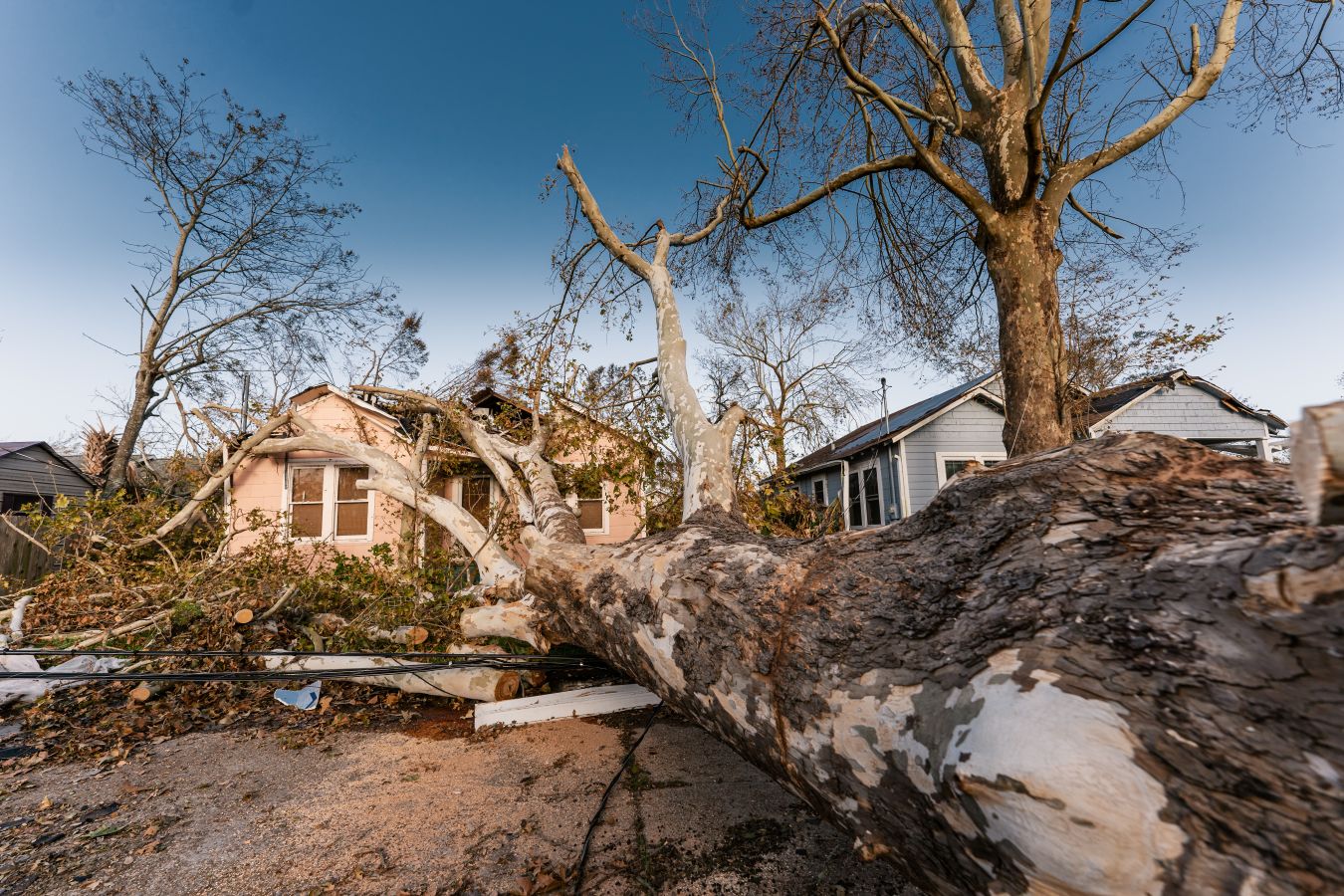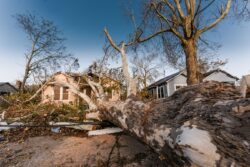Climate Migration
Climate migration occurs when people move away from home due to extreme environmental conditions worsened or caused by climate change, such as hurricanes, coastal erosion, sea level rise, flooding, and fires.

Photo by Chad Moreno.
Exposure to extreme weather events, like Hurricane Laura, which battered Lake Charles in 2020, is a significant contributor to climate migration.
Climate migration is the movement of people away from home due to deteriorating environmental conditions worsened or caused by climate change, such as hurricanes, land loss, sea level rise, flooding, and fires. Human migration may occur for various reasons, such as relocating for new jobs or to avoid war, conflict, or persecution. Climate migration is unique because residents are forced out of their communities either directly due to extreme weather that damages or destroys their area or indirectly out of concern for future storms and rising insurance premiums. Some migrants may relocate permanently. Others may relocate temporarily, returning years after an area has been rebuilt. Following a series of damaging hurricanes since the early 2000s, Louisiana cities have, at times, experienced more climate migration than other states in the nation, with some residents leaving the state entirely and others relocating to nearby towns. This entry details how extreme weather has produced Louisiana’s increasingly significant climate migration and outlines the experience of residents who relocate.
Climate: Why People Leave Home
Situated on the Gulf Coast, Louisiana often lies in the direct path of hurricanes. Climate change has worsened the effect of storms in recent decades. Warmer water temperatures during the summer months lead to stronger hurricanes with higher wind speeds and greater storm surges. These intense hurricanes also produce historic destruction, given the coast’s susceptibility to storm surge and flooding, which injures land, wildlife, and communities. Residents who experience this destruction are often forced to relocate. In 2005 Hurricane Katrina resulted in the largest human migration in US history, with more than 1 million people leaving southeast Louisiana after the storm. Two decades later New Orleans’s population remains 20 percent less than before Katrina. Since then Louisiana has experienced twenty-seven additional hurricanes, five of which measured as a severe Category 3 storm or higher.
Climate change not only fuels hurricanes but also causes major rainfall variations. Severe droughts and drier soils reduce the health of crops like corn, rice, and sugarcane; threaten livestock health; and reduce economic stability for Louisiana farmers, who sometimes lose their way of life and move away. Across the state, average rainfall has increased in recent decades, but this increase occurs in heavier downpours that lead to flash floods and soil washout. In addition the coastline subsides and erodes at rapid rates. Each year Louisiana loses an average of twenty-five square miles of shore from coastal erosion and rising sea levels. Since the early 1900s the state has lost over two thousand square miles of beach, marsh, and shore—an amount larger than the size of Rhode Island.
Coastal areas like Cameron, Orleans, and St. Bernard Parishes have experienced the greatest effects of climate change and the highest migration numbers. Since 2005 nearly 50 percent of residents living in these parishes have moved away. Population estimates predict that more will leave. By 2050 about 1.2 million people on the Louisiana coastline will be affected by sea level rise. Those who stay after losing their home typically have access to temporary housing and income needed to remain in the area until rebuilding efforts are complete. Those who migrate are less likely to have access to stable incomes, healthcare, and resources that are required to rebuild after a natural disaster, and migrants are shown to be more likely to identify as disabled, elderly, working class, single mothers, or people of color.
Migration: Where People Relocate
Most Louisianans hold emotional, spiritual, and cultural connections to their home place. As such, many residents relocate a short distance away. Some residents move up the bayou from their homes to maintain access to fishing, hunting, and recreational activities essential to their lifestyles. However, most migrating residents will move to a nearby city to ensure access to housing, jobs, and healthcare. The cities in Louisiana most likely to receive climate migrants include Baton Rouge, Hammond, Lafayette, and Lake Charles. Neighboring states like Texas and Arkansas report population increases as climate migrants leave Louisiana.
Climate migrants place added pressure on receiving cities’ energy demands, resources, and infrastructure. Following sudden migration shifts, rates of conflict and violence often increase. Existing residents may feel unease around outsiders. Incoming residents may feel grief and the absence of belonging. This stress placed on climate migrants may result in physical and mental health concerns, food and economic insecurity, and other types of social vulnerability.
While rapid climate migration is a relatively new phenomenon, the relocation of communities is not. For example, the Acadians moved to Louisiana in the eighteenth century upon being exiled from Canada. This group, whose descendants are known as Cajuns, has shaped some of Louisiana’s most recognizable food, music, and cultural traditions. Indeed, while climate migration in Louisiana may be inevitable, Louisianans continue to find new ways to live together, demonstrating how cultural and community legacies can outlast physical relocations.
